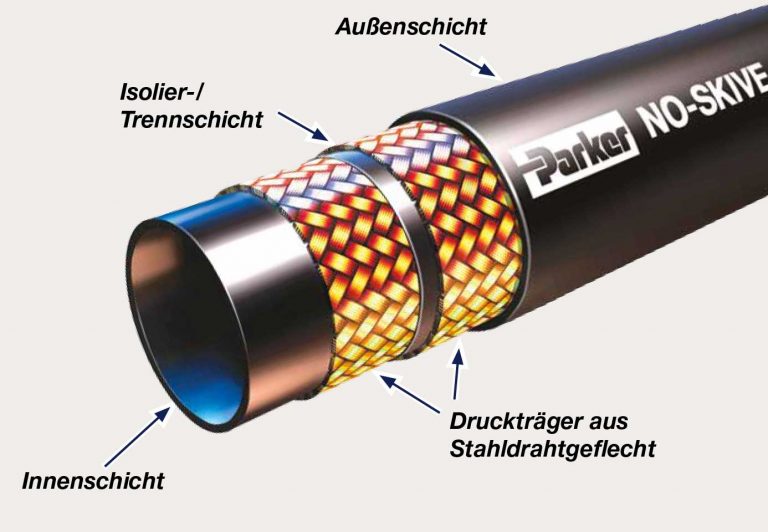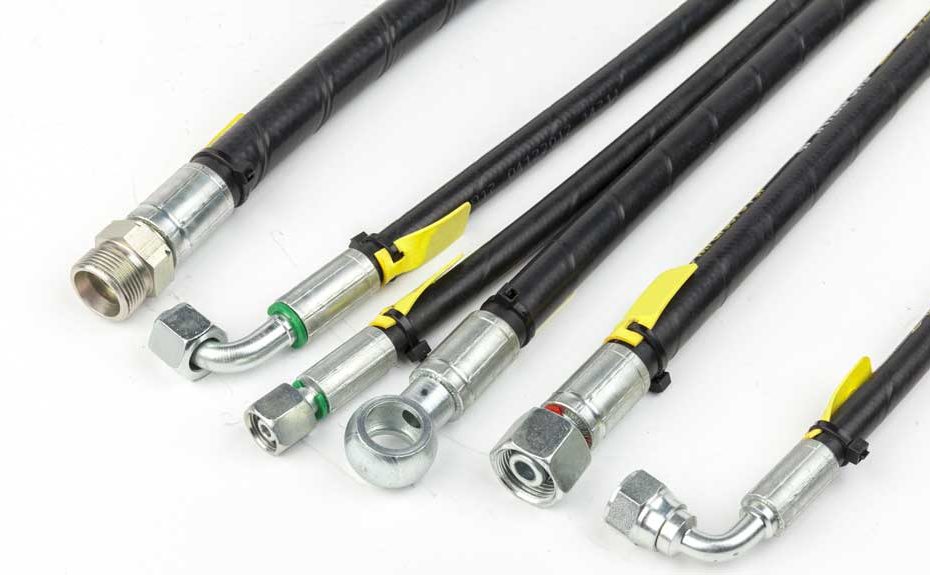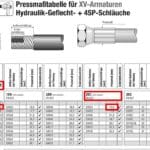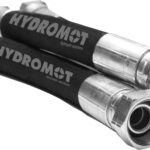The hydraulic hose - Flexible connecting element of hydraulic components
What you should know about hydraulic hose.
The harshest environmental conditions force today’s hydraulic hose and hydraulic fittings technology to adapt to the ever-increasing requirements of demanding applications in modern machines and systems. Hydraulic hoses are indispensable links in hydraulic systems. They affect the overall performance and safety of a hydraulic system.
Content
Hydraulic hoses are flexible lines and transmit hydraulic energy to hydraulic motors, hydraulic cylinders or other hydraulic actuators. Robust and durable hose technology is essential in many industries. Therefore, the investment in high-quality hose material is worthwhile for every company.
When setting up a hydraulic system, defining hydraulic hose lines is one of the last activities in machine or system design. Proper selection of the hose type and hose fittings is very crucial for the overall function of the whole system and their service life.
How is a hydraulic hose constructed?
A hydraulic hose consists of the following components:
- An extruded inner layer of synthetic rubber: its sole function is to hold the transported medium in the hose.
- A braided or spiralized pressure-bearing layer which surrounds the rubber inner layer: This pressure-bearing layer gives the hose the necessary mechanical strength against pressure or negative pressure of the flow medium. It also secures the hydraulic hose against kinking. The print substrate layer can consist of one or more layers of textile material, steel wire, or both.
- Outer layer of synthetic rubber extruded around the pressure carrier: This protects the inner layers of the hydraulic hose from environmental influences such as abrasion, chemicals, electrical voltage, mechanical stress, ozone, UV rays and weathering.

What must be observed when installing hydraulic hose lines?
If you want to significantly extend the service life and at the same time reduce the downtime of a hydraulic system, you should proceed carefully when installing hydraulic hose seals.
The connection of hose and fitting(s) to form a hose assembly is a critical process that must be performed by trained personnel. Incorrectly or improperly installed fittings can become detached from the hose and cause serious personal injury or property damage. Great danger exists if the hose fails or if fires occur due to the escaping medium.
The hose assembly must be operated within certain limits to ensure the greatest possible safety and long service life. These limits are defined by government and institutional standards as well as by specifications according to ISO 17165-2, SAE J 1273 or EN982.
In order to be able to guarantee the correct installation of hydraulic hose lines, the hydraulic hose line length must already be taken into account in the design according to the installation conditions. During assembly, pay attention to the changes in hydraulic hoses under pressure, as they may change their length and volume.
What is the maximum operating pressure of a hydraulic hose?
The maximum operating pressure (dynamic working pressure) determines the design and selection of the hydraulic hose. When selecting hydraulic hose components, make sure that the recommended maximum operating pressure of the hose and fitting is equal to or greater than the maximum system pressure.
Pressure surges or any pressure peaks in the hydraulic system must be below the maximum operating pressure of the hose assembly. The detection of pressure surges and pressure peaks can normally only be detected by correspondingly sensitive electrical measuring devices. These can measure and display pressures in the millisecond range. Mechanical pressure measuring devices such as pressure gauges are rather inert and therefore only suitable to a limited extent for measuring short-term pressure peaks. Depending on the application, hoses with textile braids, with wire braids, with wire spiral inserts or even special hoses made of metal or PTFE are used.
What should be considered for the bending radius when mounting a hydraulic hose?
Too tight bending radii, but also twisting (torsion) can lead to constrictions of the hose cross-section. This results in additional stress and can also increase flow resistance.
The most frequent shortfall of the minimum bending radius occurs especially directly behind the press sleeve (binding) of the hydraulic hose. The hose is kinked too much behind the socket.
If the minimum bending radius is not reached, coverage gaps may occur in the wire mesh on the outer bend due to the larger area to be covered. This can result in so-called “oil spills”, which can cause considerable risk of injury. Critical is also the inner bend, there the opposite effect one. The inserts are compressed and thus no longer fit tightly enough against the inner layer of the hose. This will cause them to lose their pressure bearing properties.
The minimum bending radius of a hose refers to the smallest radius at which the hose can be bent. The radius is set while the hydraulic hose is under the maximum allowable operating pressure. It should be noted that the bending radius is neither a measurement nor an indication of the flexibility of a hydraulic hose. If the installation situation permits, a straight section of at least 1.5 times the outer diameter of the hose between the fitting and the start of the bend should be allowed for when laying the hose.
The direct way to our hydraulic store
Assemble your hydraulic hose now in our hydraulic store!
- Mobile control block - 13. May 2023
- Hydraulics lowering brake valves - 6. May 2023
- axial piston engines - 2. May 2023


